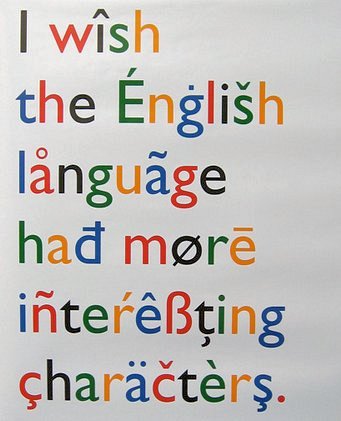
Diacritic - Term 11
A diacritic - also diacritical mark, diacritical point, diacritical sign is a glyph added to a letter, or basic glyph. The term derives from the Greek "distinguishing"). Diacritic is primarily an adjective, though sometimes used as a noun, whereas diacritical is only ever an adjective. Some diacritical marks, such as the acute (é) and grave (è) are often called accents. Diacritical marks may appear above or below a letter, or in some other position such as within the letter or between two letters.
| é - accent acute | è - accent grave | ê - circumflex | ë - umlaut or diaerisis | ç - cedilla |
| ñ - tilde | Ø - streg | å - bolle | æ - ligature | œ - ligature |
| ē - macron | č - há | ŭ - crescent |
Diacritics in English include the following: Acute accent: used with certain French loanwords (for example, café, cliché) to indicate that the final e is pronounced Apostrophe: used to indicate possession (children's) and the omission of a letter (don't) Diaeresis or Umlaut: used with certain names (Chloë, Brontë) and words (coöperate, naïve) as a guide to pronunciation Grave accent: occasionally used in poetry to indicate that a normally silent vowel should be pronounced (learnèd) Macron: dictionary notation (for example, pä-dä- for payday) to signify "long" vowel sounds.